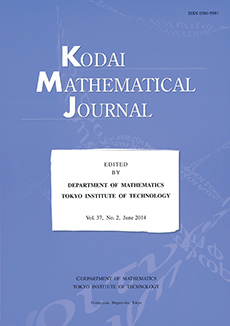Abstract
A compact Riemann surface X of genus g ≥ 2 is called asymmetric or pseudo-real if it admits an anticonformal automorphism but no anticonformal involution. The order d = #(δ) of an anticonformal automorphism δ of such a surface is divisible by 4. In the particular case where d = 4, δ is a pseudo-symmetry and the surface is called pseudo-symmetric.
A Riemann surface X is said to be p-hyperelliptic if it admits a conformal involution ρ for which the orbit space X/<ρ> has genus p. This notion is the particular case of so called cyclic (q,n)-gonal surface which is defined as the one admitting a conformal automorphism φ of prime order n such that X/φ has genus q. We are interested in possible values of n and q for which an asymmetric surface of given genus g ≥ 2 is (q,n)-gonal, and possible values of p for which the surface is p-hyperelliptic. Up till now, this problem was solved in the case where the surface is asymmetric and pseudo-symmetric. If an asymmetric Riemann surface X is not pseudo-symmetric then any anticonformal automorphism of X has order divisible by 2sn for s ≥ 3 and n = 1 or n being an odd prime. In this paper we give the necessary and sufficient conditions on the existence of an asymmetric Riemann surface with the full automorphism group being G = Z2sn, and we study (q,n)-gonal automorphisms and p-hyperelliptic involutions in G.
Citation
Ewa Kozłowska-Walania. Ewa Tyszkowska. "On a certain family of asymmetric Riemann surfaces with the cyclic automorphism group." Kodai Math. J. 39 (3) 510 - 520, October 2016. https://doi.org/10.2996/kmj/1478073768
Information





